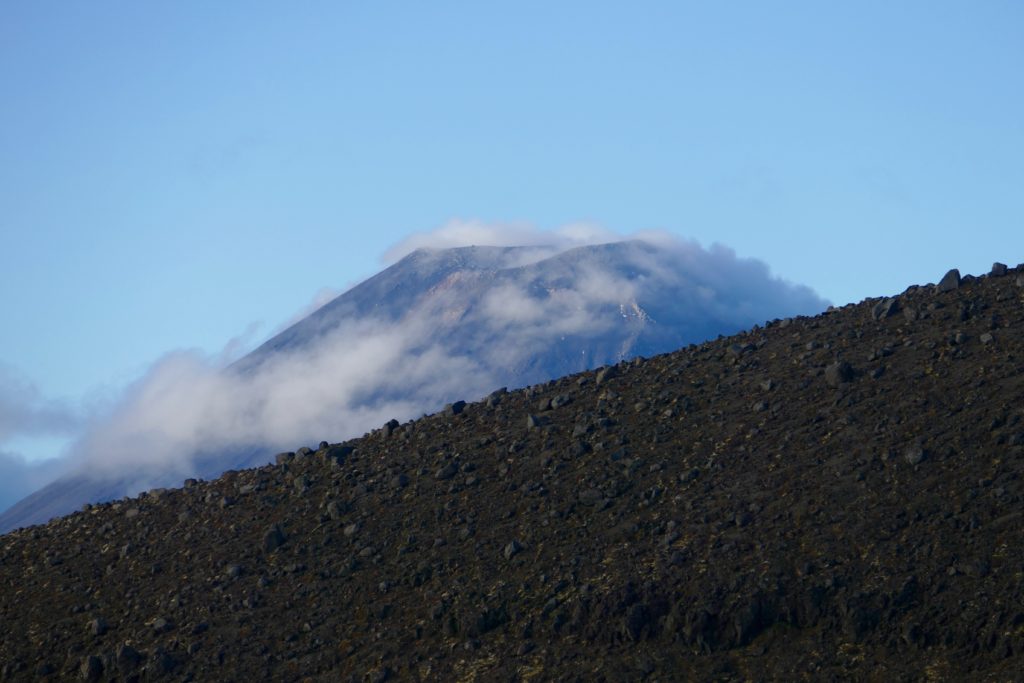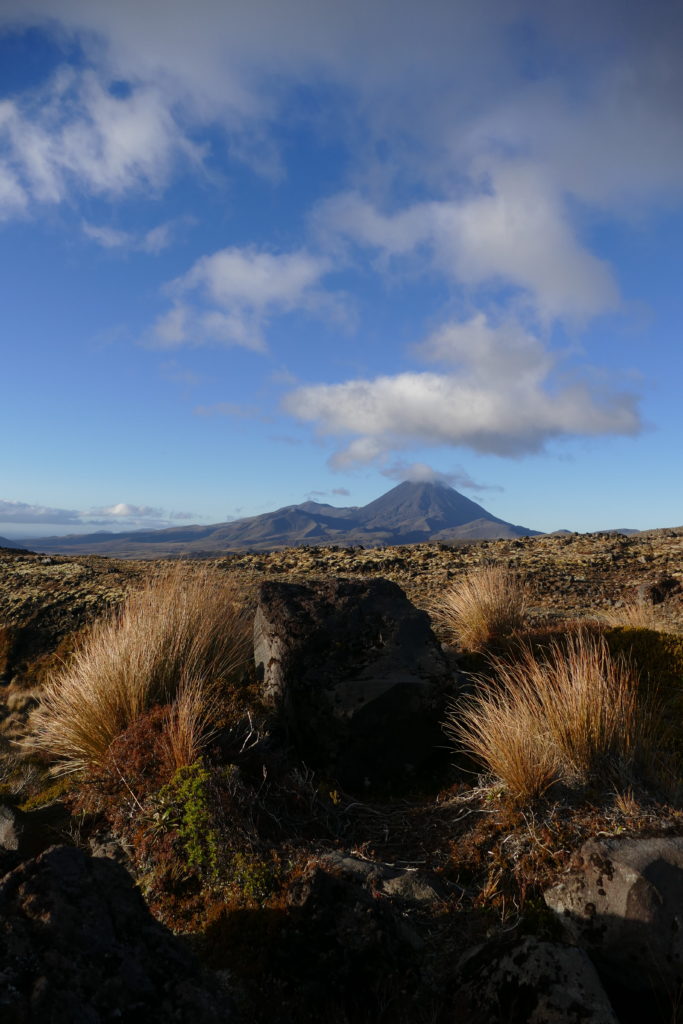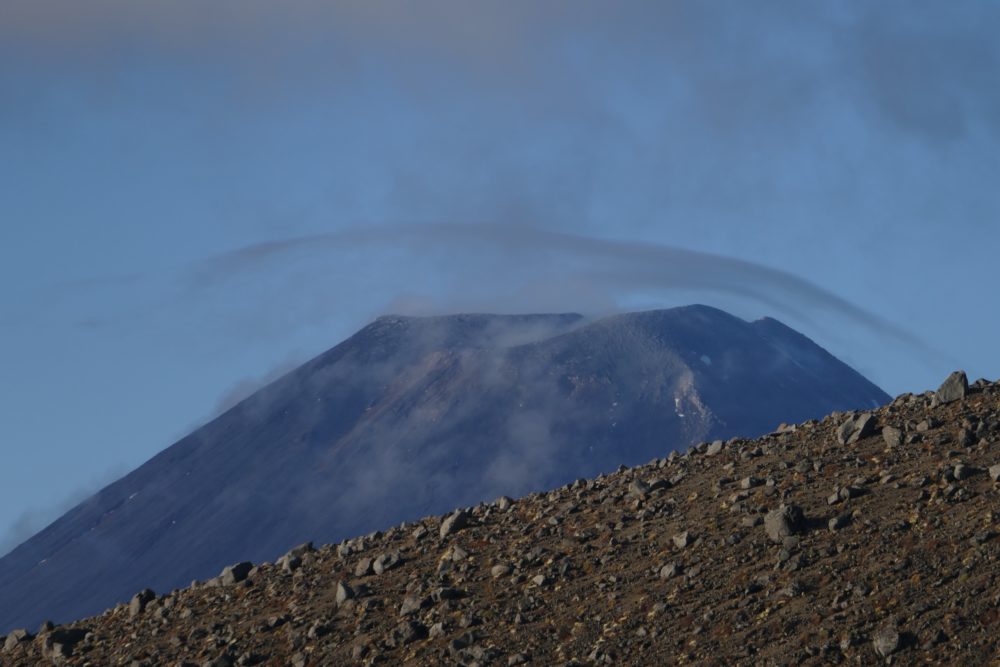Thanks to Sir Peter Jackson, many millions more human eyes have looked at this active volcano than have human feet walked anywhere near it. Most who “know” it via The Lord of the Rings trilogy do not even know its real name.
Ngauruhoe is the youngest vent in the Tongariro complex, which rises from the central plateau on New Zealand’s North Island – a very active place, volcanically.
Tongariro National Park is the fourth oldest in the world, and is World Heritage listed twice – for its natural splendour and for its Maori cultural heritage.
It was the world’s first national park to begin as a gift from a nation’s indigenous people.
Its big volcano is Ruapehu. At 2,797 metres it is the North Island’s highest mountain and the only currently glaciated one.
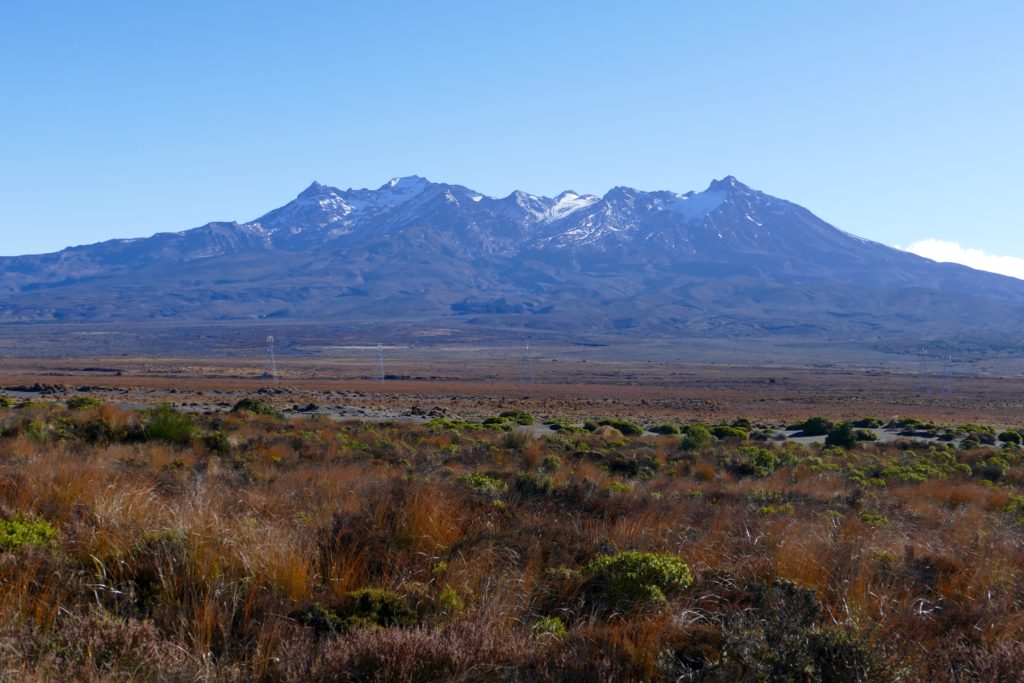
2,287 metres high, Ngauruhoe presents as an almost-symmetrical mountain in its own right.
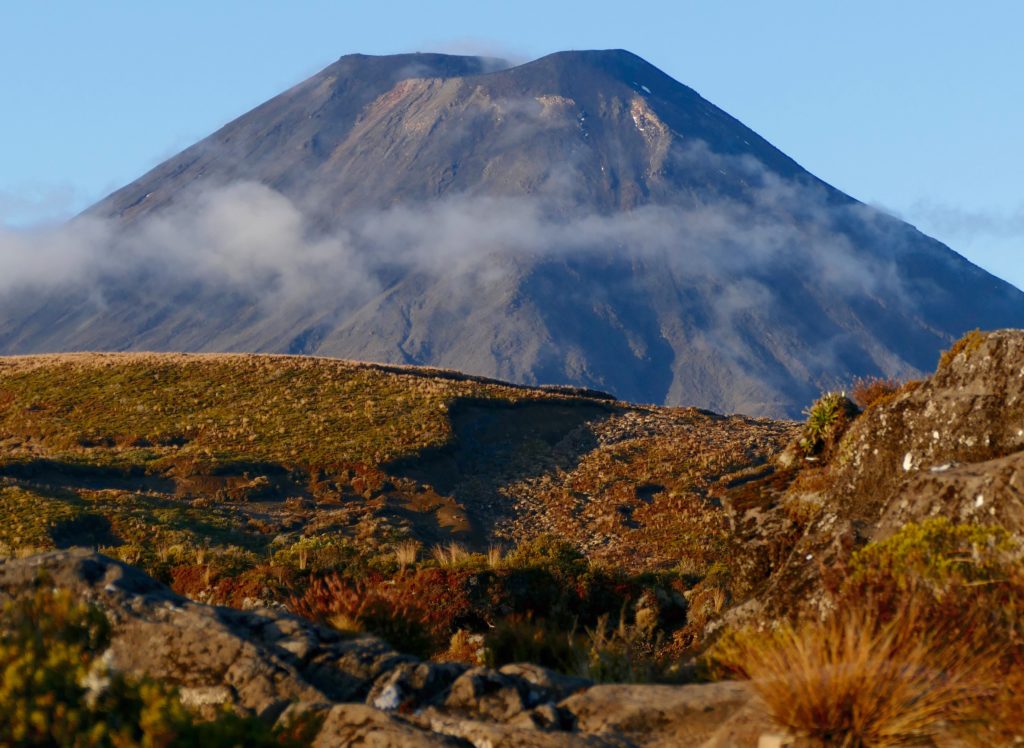
In fact, Ngauruhoe is a subsidiary cone of the lowest (1,967 metres) of the national park’s three mountains – Tongariro itself, pictured below.

My beloved and I were in and around Tongariro National Park in late autumn, in mild weather, before any “new season” snow had arrived.
Snow can arrive, anytime; even on an “easy” walk on a “lovely” day one must be prepared for suddenly-extreme weather.
Late in the afternoon, at circa 1500 metres, the shoulder of Mount Ruapehu is a very chilly place, even when snowfalls are neither recent nor imminent.
The alpine vegetation at one’s feet is definitely not lush, but it is wondrous strange and beautiful.
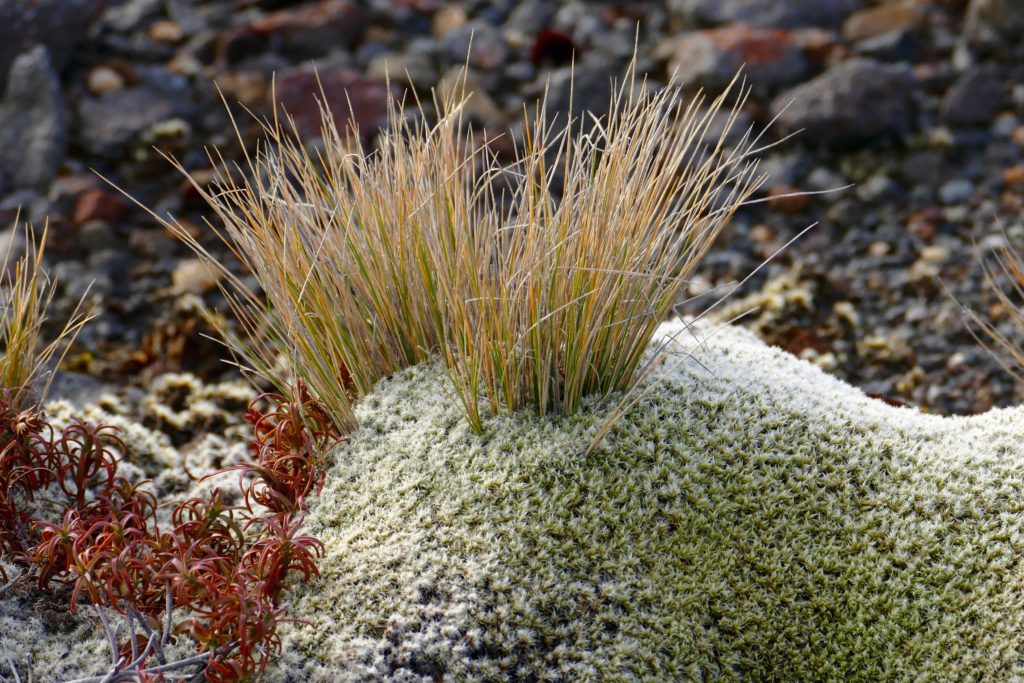
The same description fits the view across to Ngauruhoe.
